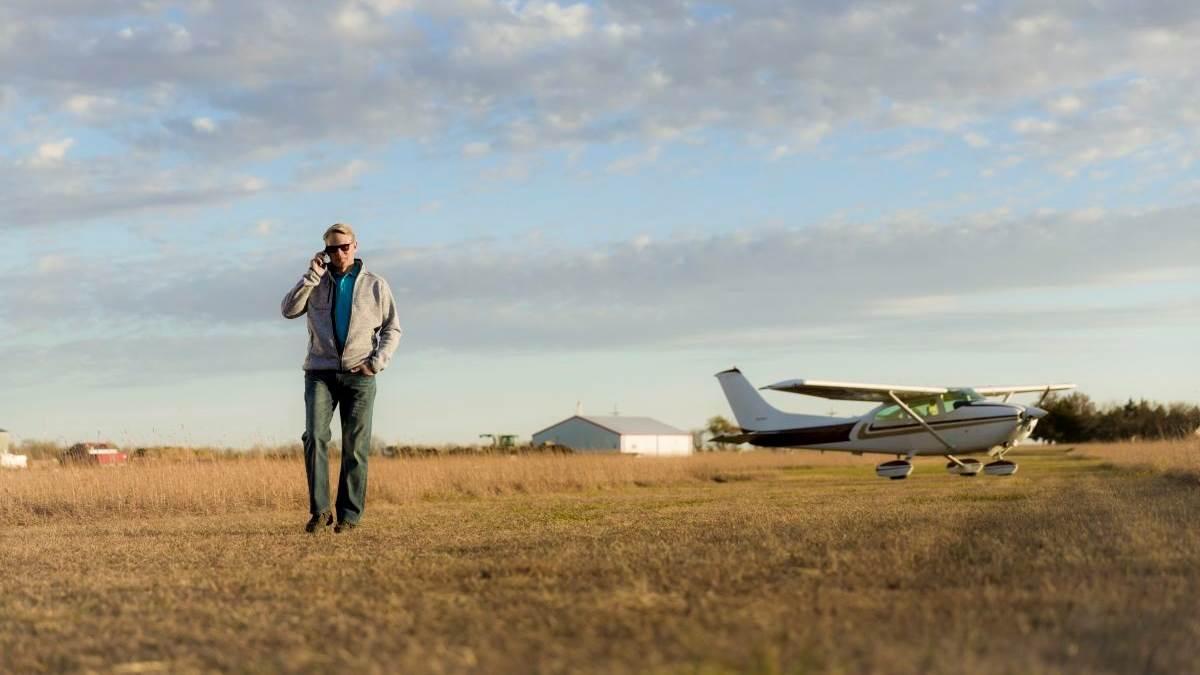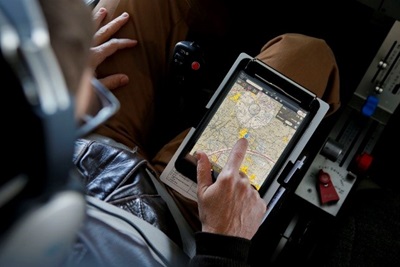Enhance Your Communication Options
Safety SPOTLIGHT: Survive

Your best bet for reaching rescuers is to carry an array of communication devices and know how to use them. The best-case forced landing scenario is one where ATC heard your mayday call, your last known position is on radar, your Emergency Locator Transmitter (ELT) activated at impact and started sending a distress signal, your cell phone is fully functional, and your emergency contact knows when to assume things went wrong and who to contact to begin search and rescue. Unfortunately, if you just had a forced landing, things are clearly not going according to plan.
Emergency Locator Transmitter—ELT
Your ELT is your cry for help even in the event you are unconscious. But don’t assume your ELT is properly installed and working. Check it before your flight and during maintenance inspections to increase the likelihood it will work when you need it. Read the manual so you know how it works. Some come with portable antennas attached to the box. If you crash and the installed antenna cable is severed or the main antenna is sheared off, it is good to know there is a backup and how to use it.
There is a slew of reasons why you shouldn’t rely on an ELT as your only emergency signal. A signal may not get out if it doesn’t survive a post-impact fire or has an antenna that is broken or covered with debris.
Personal Locator Beacon—PLB
A 406 MHz PLB can relay distress signals directly to search and rescue via satellite. Not all PLBs are created equal. Those with integrated GPS systems provide detailed location information and will help rescuers pinpoint your location within 100 yards if the GPS antenna has a clear view. Non-GPS PLBs rely on satellite-based position fixes that are less accurate (within a few miles).
Satellite messengers like SPOT, SpiderTracks, and InReach are handy for rescue communications, but unlike PLBs do not automatically notify international search and rescue authorities. The capabilities and rescue response protocols are brand and model specific. Both PLBs and satellite messengers need to be manually activated, so whatever device you choose to carry, keep it within arm’s reach, or better yet, on your person. Just like your fire extinguisher, briefing your passengers about where it is and how to use it is for your safety as well as theirs. A satellite phone allows you to share even more details. Remember that phones or text-based communications require some presence of mind so important details aren’t left out if a call ends prematurely due to battery life or reception.
Real Pilot Story from the field: No Go-Around
Backcountry flying is mesmerizing and rewarding, but it also presents unique challenges. For example, exploring a remote airstrip—especially a no go-around field surrounded by high terrain—requires that pilots conduct thorough briefings and perform extra planning before committing to the flight. Join the AOPA Air Safety Institute’s executive director Richard McSpadden in “No Go-Around” as he speaks with four pilots who discuss lessons learned from a flight that went terribly wrong and a PLB made a critical difference in the outcome.
Electronic Flight Bag—EFB
 More and more pilots are going paperless and using Electronic Flight Bags (EFBs). These can help pinpoint your position provided you have sufficient battery power. Gadget-dependent pilots should consider carrying an external USB battery to recharge electronics.
More and more pilots are going paperless and using Electronic Flight Bags (EFBs). These can help pinpoint your position provided you have sufficient battery power. Gadget-dependent pilots should consider carrying an external USB battery to recharge electronics.
Tip: Even in a paperless world, it is amazing how handy a pen and paper can be for survival and rescue. Without them, it is hard to leave a note that you left the site for a nearby road.
Signal with High Contrast, Flashing Light, and Sound
Don’t forget the value of signaling. When you hear rescue aircraft, don’t stop trying to get their attention until you know they have seen you. Signal fires, flares, rescue strobes, beacons, signal mirrors, whistles and air horns, and even waving a shirt will make it easier for them to find you. A properly used signal mirror, even a CD or DVD, can be spotted from more than 60 miles away.
For ground-to-air signaling, right angles and sharp corners will stand out to rescuers as will bright contrasting colors, such as orange and yellow, or black dirt or objects on white snow. The shape of your signal can also communicate information. A large V indicates you need help, X indicates injury, and an arrow can help point to your campsite or the actual site. Remember, bigger is always better.
Survival Gear Checklist
|
Category |
Purpose |
Items |
|---|---|---|
|
Medical |
Treat injuries and illness |
First aid kit, prescription meds, aspirin, splint, blood-clotting agents |
|
Shelter/Clothing |
Survive the elements and maintain body temperature |
Bivvy shelter, space blanket, tent, tarp, poncho, parachute chord, waterproof shell, hat, gloves, wool socks, heat packs, sunscreen, lip protection |
|
Fire |
Signaling, comfort, warmth |
Sparking metal fire-starter tool, storm-proof matches, weather resistant lighter, petroleum jelly-soaked cotton balls or fire-starter sticks |
|
Rest/Attitude |
Preserve physical condition and mental attitude |
Picture of a loved one or item of sentimental value, book, deck of cards, survival guide, foam camp pad |
|
Water |
Maintain hydration |
Water bottle, purification tablets or device, water collection container |
|
Food |
Provide energy to preserve physical condition and maintain mental acuity |
Trail mix, jerky, nuts, energy bars, MREs, high-calorie gel packs, fishing kit |
|
Signaling |
Aid search and rescue |
ELT, PLB, or commercial tracking device; satellite phone, handheld radio, whistle, flares, strobe or laser beacon, signal mirror/reflector, bright colored fabric |
|
Tools and miscellaneous |
General survival utility |
Flashlight or headlamp, duct tape, parachute chord, small straight blade knife, multi-tool, pocket saw, compass, paper and pen for notes |